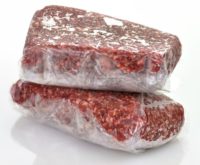Limiting the Risks of Stored Product Pests Along the Food Supply Chain

A number of insects can potentially enter food processing, storage and handling sites. Some species—if they find suitable food material—can reproduce inside and cause an infestation. These insects are typically referred to as stored product pests. Some will feed on whole grains like the rice, maize and granary weevils. Others will be in processed foods like flour beetles, warehouse beetles and Indian meal moths. Finally, there are pests found in poor sanitary conditions such as cockroaches and flies.
Proper identification of the pests is the first step. This identification will lead to information on where the pests might be originating from, what their food preferences might be, and what treatment options might be best. Think of standing in a closed, dark room. With a flashlight, you can pinpoint certain areas and focus on where you need to go. But without that flashlight, you are just wandering around in the dark. Correct identification is like a flashlight to pinpoint likely areas and focus our time and attention on those areas.
To determine what pests are present at a site and in what numbers, monitoring devices are utilized. Insect pheromone devices can identify which stored product pests are present. Insect light traps can also indicate what flying invaders are potential issues. Both mechanical traps and bait stations will help indicate if there is rodent activity. As important as it is to identify which pests are in these devices, analyzing the data and looking at the overall population trends can lead to identifying problem areas, sanitation issues and increases in population levels. These data can be used to make application decisions that are targeted and effective.
Say you find 15 warehouse beetles in a sticky trap in your warehouse. If you also know that the previous week you only found 10 and the week before only five, this clearly indicates a population that is increasing. If you know that devices around that one haven’t had any activity, you can infer that the issue is localized to that one area around the trap. You can then focus inspection efforts to that specific area. The decision can be to target that area for action, instead of treating an entire warehouse. Analyzing the data from these devices can be a valuable tool in catching issues early and managing pest risks.
An important way to reduce the risk of pests is by having good sanitation practices. Sanitation is a key part of an integrated pest management (IPM) approach. Coupled with facility maintenance steps, an IPM program is the most effective program to proactively manage pest pressures. By limiting the amount and the access to a food source, facilities can limit the number of individual pests. Limited food means more competition and more resources expended to find the food. Because of this, pests will develop and reproduce much slower, keeping overall populations minimized. While sounding pretty simple, sanitation is in fact very complicated. The goal is to do as much as possible with the time and resources you have. Sanitation is also important on the outside. Pests can be attracted to dumpsters, trash bins and other areas where decomposing plant and animal matter may be present. Keeping the outside neat and clean discourages high numbers of pests, meaning less risk. By having good sanitation, you can reduce, prevent or even eliminate pest problems.
Stored product insects and rodents are small. They can utilize very small openings to enter a facility. For example, a full-grown rat needs just a half an inch opening to get in. It’s impossible to completely seal up a structure, but all doors, windows and other openings should be sealed, screened or otherwise closed off. Personnel and dock doors should be kept closed when not in use and the seals around them close fitting. Air handling units should be properly screened, and filters should be changed on a regular basis. Any openings that connect the inside of a building to the outside should be addressed. Many pests have a natural population on the outside and not providing them with an entry point will help keep them from entering and infesting a site.
When it comes to control options, pesticides should be the last step when dealing with a pest issue. Pesticides are valuable tools and can significantly impact a population. However, if underlying conditions are not addressed, the efficacy of a pesticide treatment may be limited and short lived. Pesticide options range from insect growth regulators, baits and small residual treatment up to full facility gas fumigations. The decision to treat should be based on the pest species, the population levels and affected spaces. Work with your pest control provider to determine if pesticide use is the right choice and to ensure all label instructions are followed.
The majority of facilities contract out their pest management to a third party, although some still maintain an in-house pest control program. In either case, a pest management program should be an integrated approach, using all available tools and resources to address the issues. Pest management is not just one person’s job. The entire facility team has responsibilities including sanitation, inspections and addressing structural issues. Consider your pest management a partnership between the sanitation team, maintenance department, quality assurance, your pest management professional and everyone at your site. There is always a risk of having pests, but that risk can be greatly minimized with everyone working together.
Chelle Hartzer is a Board Certified Entomologist and staff entomologist with Industrial Fumigant Company.
Looking for a reprint of this article?
From high-res PDFs to custom plaques, order your copy today!




